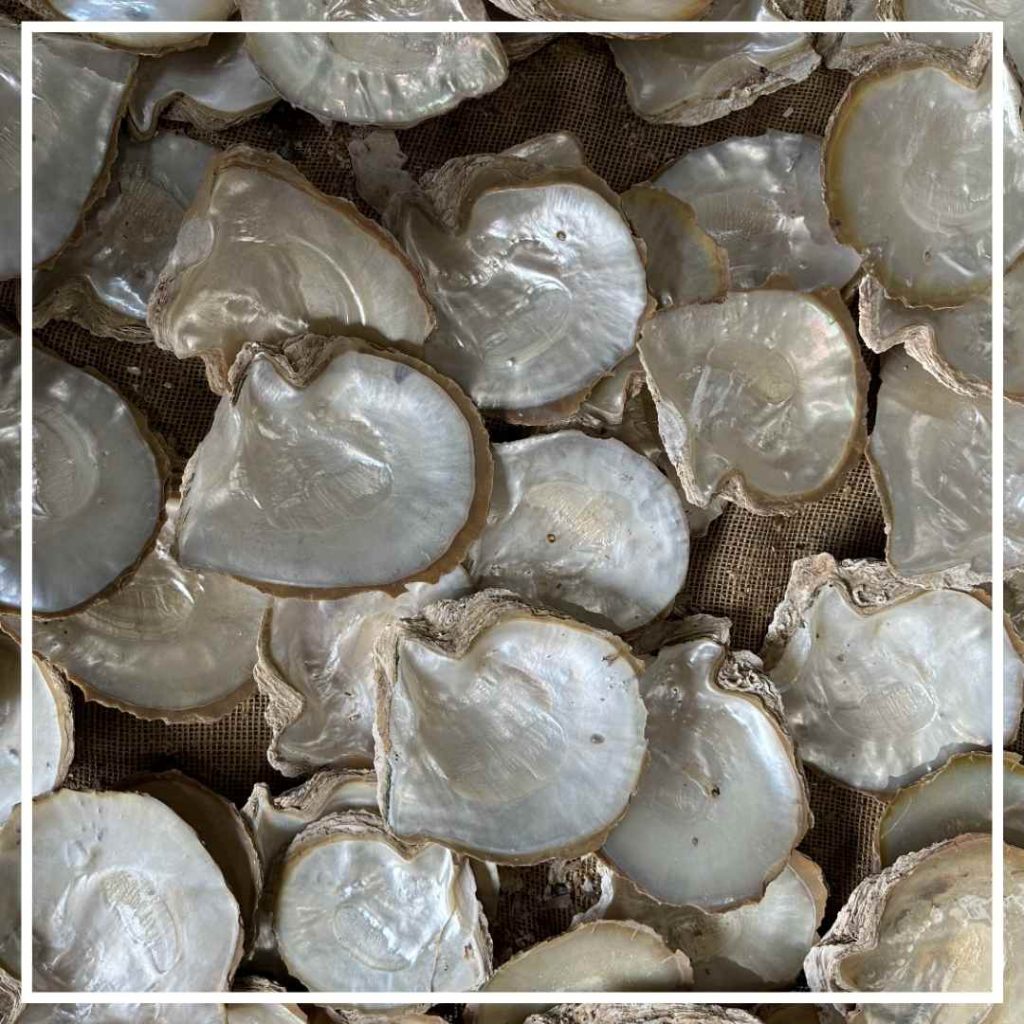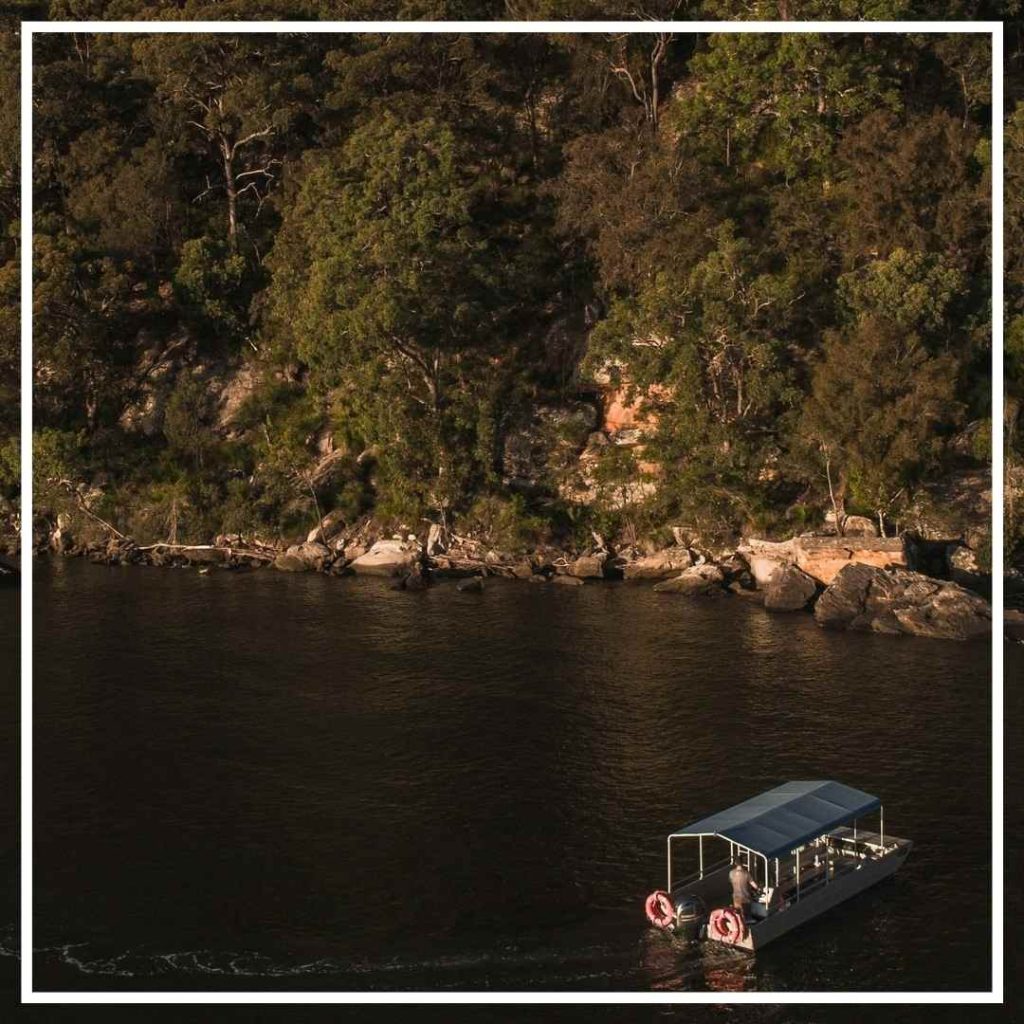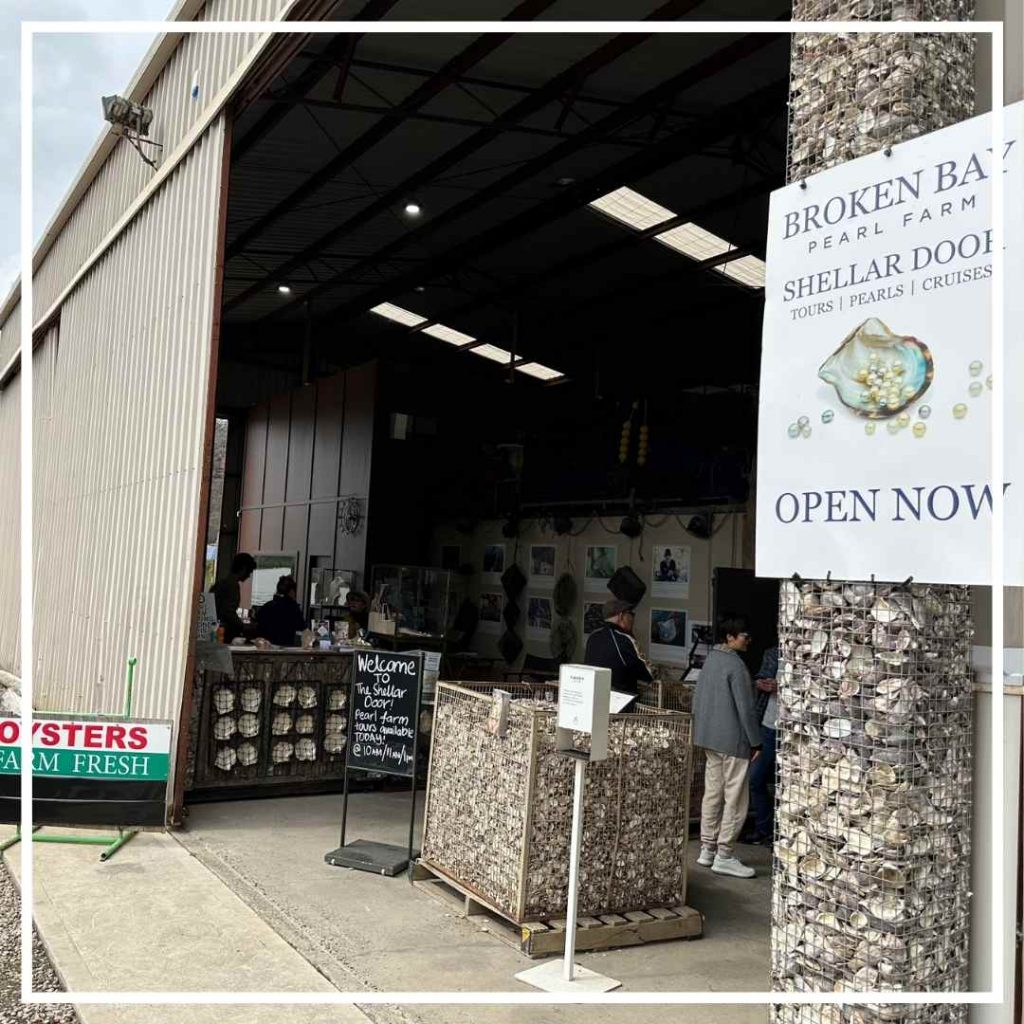Aussie Gems: Why You Should Visit The Broken Bay Pearl Farm

Sophie Lanigan is an architectural designer, researcher and editor.
A visit to The Broken Bay Pearl Farm is a delightful experience that gives insight into the only pearl farm in New South Wales. Just an hour north of Sydney, the Shellar Door in Mooney Mooney is where members of the Pearls of Australia team will greet you with an infectious passion for oysters and their gems.

Before embarking on a cruise to the oyster lease, we learn about Australia’s turbulent and triumphant history of pearl farming. For millennia the coastal indigenous nations of Australia cultivated oysters for eating in addition to ascribing a high cultural and trade value to pearling shells. Local to Broken Bay, the indigenous Darug and Darkinjung peoples have ongoing deep knowledge and connection with the land and surrounding waters. Industrialised pearling practices emerged in Western Australia during the 19th Century, with Broome producing 90% of the world’s pearl buttons before WWII.
Currently, Australia is re-emerging as a producer of the highest quality, sustainably farmed pearls, in part thanks to Pearls of Australia owner James Brown whose ethical and sustainable farming methods were recognised with the 2021 Award of Australian Farmer of the Year. Brown is a third-generation pearl farmer whose leases in Cygnet Bay, Broken Bay and Broome maintain the highest standards to bring the highest grade of locally grown pearls to market.

With this new appreciation for the history of pearling, we head onto the Hawkesbury to visit some of the hatchlings for the Australian Akoya Pearl in Brisbane Waters. Out on the water, we are in oyster territory. We glide past Spectacle Island, a sanctuary for wildlife humming with the song of spring and verdant colour vibrantly reflecting off the river. Farmers zoom around on oyster punts to visit their leases marked by white poles – the majority of farming up here is for food, but the beauty of pearl farming is that it fits in seamlessly.
Arriving at the lease, our knowledgeable guide uses a pole to bring up a netted box where the young oysters grow. It is a delicate sort of farming – quiet, meticulous, and un-intrusive on the landscape. As the only precious gem to come from a living organism, pearls and their farming is exact. There are many labour-intensive and climate-dependent stages over a five year cycle to bring a single pearl into the world.
In a few short days, the floods of 2021 wiped out years of work, as millions of salt water oysters were lost to an inundation of freshwater. The pearling industry is highly susceptible to the effects of climate change, with rising sea temperatures making challenging breeding conditions for oysters. However, increasing oyster populations is one of many proactive methods to impact the planet positively.
Oysters are filter feeders, which means they remove algae from plankton in a water purification process that helps sunlight to penetrate further into the body of water. This creates a healthy environment for seagrasses and underwater environments that are important sites of aquaculture and carbon sinks. In the aftermath of the severe 2019/2020 bushfires, dense oyster populations in the Hawkesbury region expedited the rejuvenation of waterways that had been coated with ash.

With increased respect for the silent work of oysters and the hard work of the farmers caring for them, we return to the Shellar Door to examine pearls from this farm and those in Western Australia. They are truly stunning in their lustre, shape, size and colour. Yet, in addition to their formal beauty, the transparency around their growth afforded by a visit to the farm, adds another dimension of intrigue for these local gems.
My appetite to wear pearls is now matched by an appetite to eat. And so we sit down, looking across the river and feast on locally grown oysters. Sydney Rock Oysters and Pacifics, as fresh as can be, taste fantastic. After checking for pearls, we also try an Akoya Oyster with a distinct and refined flavour – this species is relatively new on the culinary menu but is quite delicious. We are also treated to pearl meat presented on a mother-of-pearl plate.
This delicacy is the abductor muscle from the Australian South Sea Oyster (Pinctata maxima) and is only made available to eat once the oyster has finished with pearl production. Honestly, it is one of the most delicious things I’ve ever eaten. As we feast, we sip on The Pearler’s Gin from Moontide Distillery, which includes oyster mantle (part of the oyster that produces mother of pearl) in its production.

A visit to the Broken Bay Pearl Farm is a transportive experience of natural beauty, conscious luxury, and promising aquaculture – it is the pearl of the central coast and is not to be missed.
They have tours to fit a wide range of price points from $65 boat tours to decadent 4 hour adventures featuring private experiences and a keepsake pearl of your own.








